Installed on individual parking lots at VTTI, six systems replaced 58 luminaires on nearly 350,000 square feet of space. In terms of technology and design, the systems used a variety of architectures and approaches that featured manual and automatic GPS node mapping, remote and fixture-integrated sensor mounting, and passive infrared (PIR) and microwave radar sensors.
| System | Control Node | Mapping | Occupancy Sensor | Occupancy Sensor Type | Cellular Connection | Gateway Mounting | Front End Software |
| 1 | 7-pin | Physical | Luminaire Integrated | PIR | Owner | Building | PC |
| 2 | Luminaire Integrated | Physical | Luminaire Integrated | PIR | Owner | Building | Cloud |
| 3 | 7-pin | GPS | Pole Mounted | PIR | Owner | Building | Cloud |
| 4 | Luminaire Integrated | Physical | Luminaire Integrated | PIR | Manufacturer | Building | Cloud |
| 5 | 7-pin | GPS | Luminaire Integrated | PIR | Manufacturer | Pole | Cloud |
| 6 | 7-pin | GPS | Pole Mounted | Radar | Manufacturer | Pole | Cloud |
SYSTEM ARCHITECTURE
Regarding system architecture, each system featured the same components: luminaires, control nodes, gateways, and sensors. However, there were key differences in the way components were integrated. For example, some control nodes used a 7-pin receptacle, while others integrated the control node in the luminaire. Some gateways were mounted on poles, others on buildings, while some needed to be inside and others outside. For occupancy sensors, some were integrated in the luminaire while others were pole mounted.
Control Nodes. All systems were required to include a wireless control node in each luminaire to allow for communication between the dimmable driver and the occupancy sensor, and to enable it to communicate with other luminaires in the system and to a central management system through a gateway.
The wireless control node also monitors the luminaire’s input voltage and energy use and communicates the information to a central controller (through a gateway) improving the ability to manage energy use, maintain system performance and improve security.
Entrants were encouraged to use control nodes installed via a 7-pin receptacle (compliant with NEMA C136.41), but two of the six manufacturers chose to integrate the controller in the luminaire. Manufacturers chose to map the systems (allowing the central control to know the location of each node) in a variety of ways.
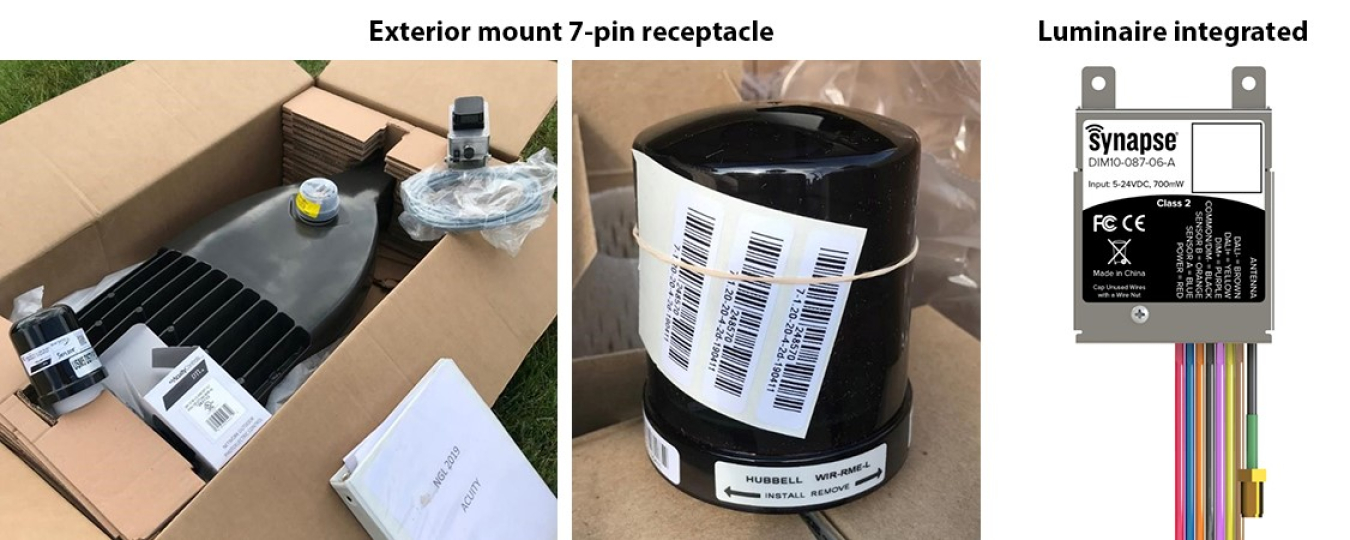
Gateways. All systems used a gateway to manage, monitor, and receive information from each luminaire’s control node. Manufacturers offer gateway connections either wired (ethernet) or wireless (cellular). For NGLS, however, all systems were connected through wireless cellular communications. The gateway communicates with the central management system, which can be accessed through central management software with nodes communicating to each other as well as the gateway.
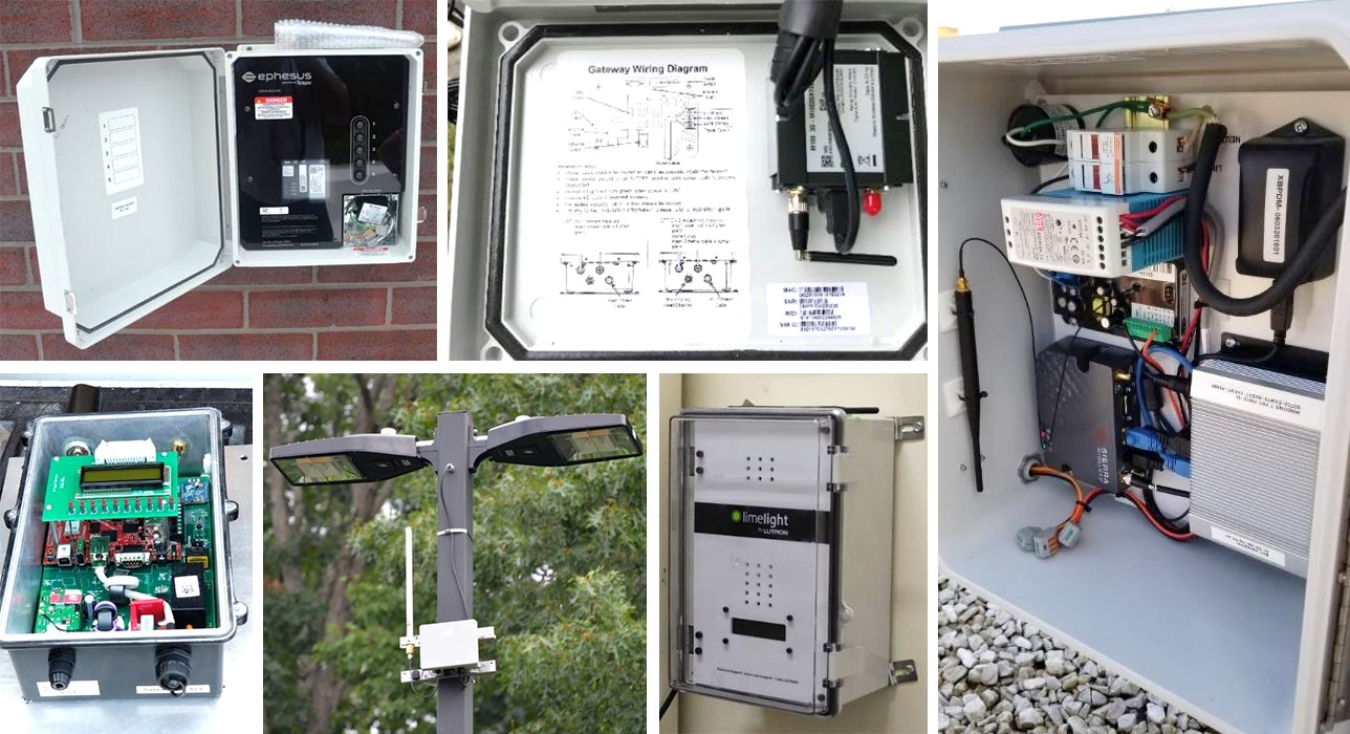
Occupancy Sensors. Systems were also required to incorporate occupancy sensors to detect the presence of cars and pedestrians in the parking lot. The sensors communicate activity to the dimming driver through the control node allowing the luminaire to respond (raise or lower the light level) to activity based on system programming.
SYSTEM APPROACHES
A variety of system approaches to node mapping, cellular communications, and presence detection were found. The systems also varied in their approach to the central management software and the degree of customization allowed, in the commissioning process and the level of manufacturer involvement, and in the documentation resources available.
Mapping of Nodes. Manufacturers used different methods to identify the location of the nodes and the associated luminaires. Some used nodes with an integrated GPS device that provides automatic, real-time location of the node. Others required manual mapping during installation and configuration. One method of manual mapping used a barcode that was affixed to the luminaire or pole to identify the associated node. Another method used a radio stick to read the MAC address of each node installed in the parking lot.
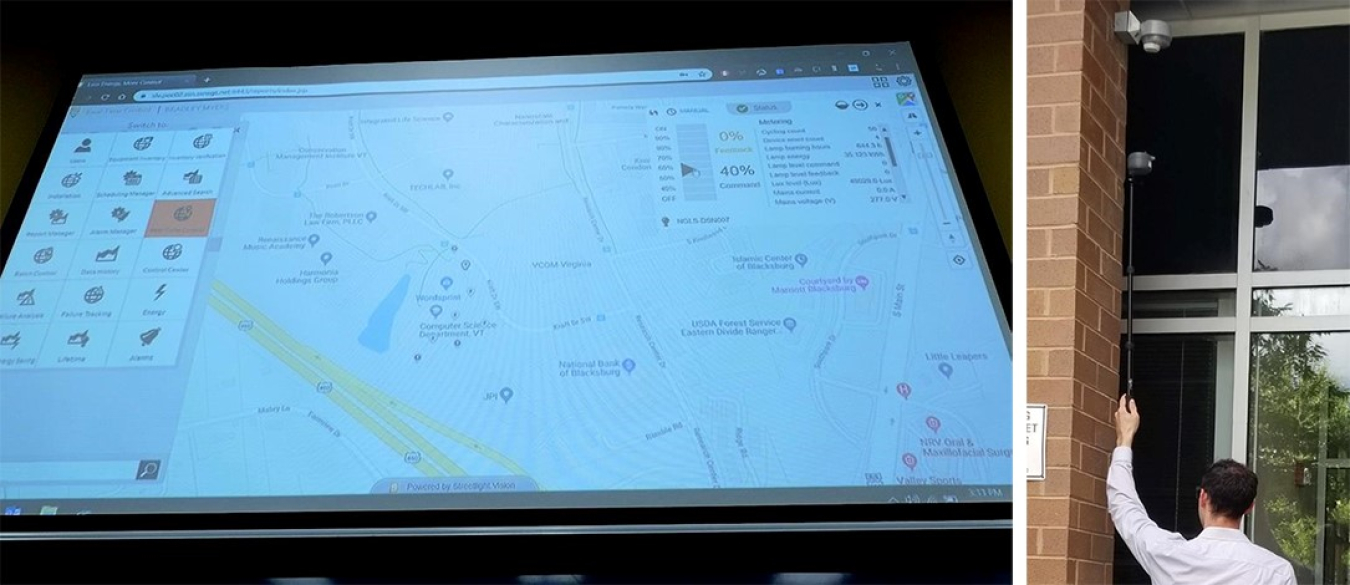
Cellular Communications. Systems communicate from the gateway to central management software using either ethernet (wired) or cellular (wireless). NGLS required cellular communications so that communications would be outside the VTTI firewall, thus eliminating security concerns. Manufacturers provided cellular communications in one of two ways: some provided the service as part of the system package (no work required by the owner) and some required that the cell service be provided by the owner. Additionally, manufacturers handled the purchase, installation, and programming of the gateway SIM card in a variety of ways:
- Owner procures SIM card. Manufacturer installs and programs SIM card onsite.
- Owner procures SIM card. Manufacturer installs and programs SIM card at the factory, then ships the gateway.
- Manufacturer provides SIM card with the gateway. After startup, manufacturer releases SIM card and cell service account is transferred to owner.
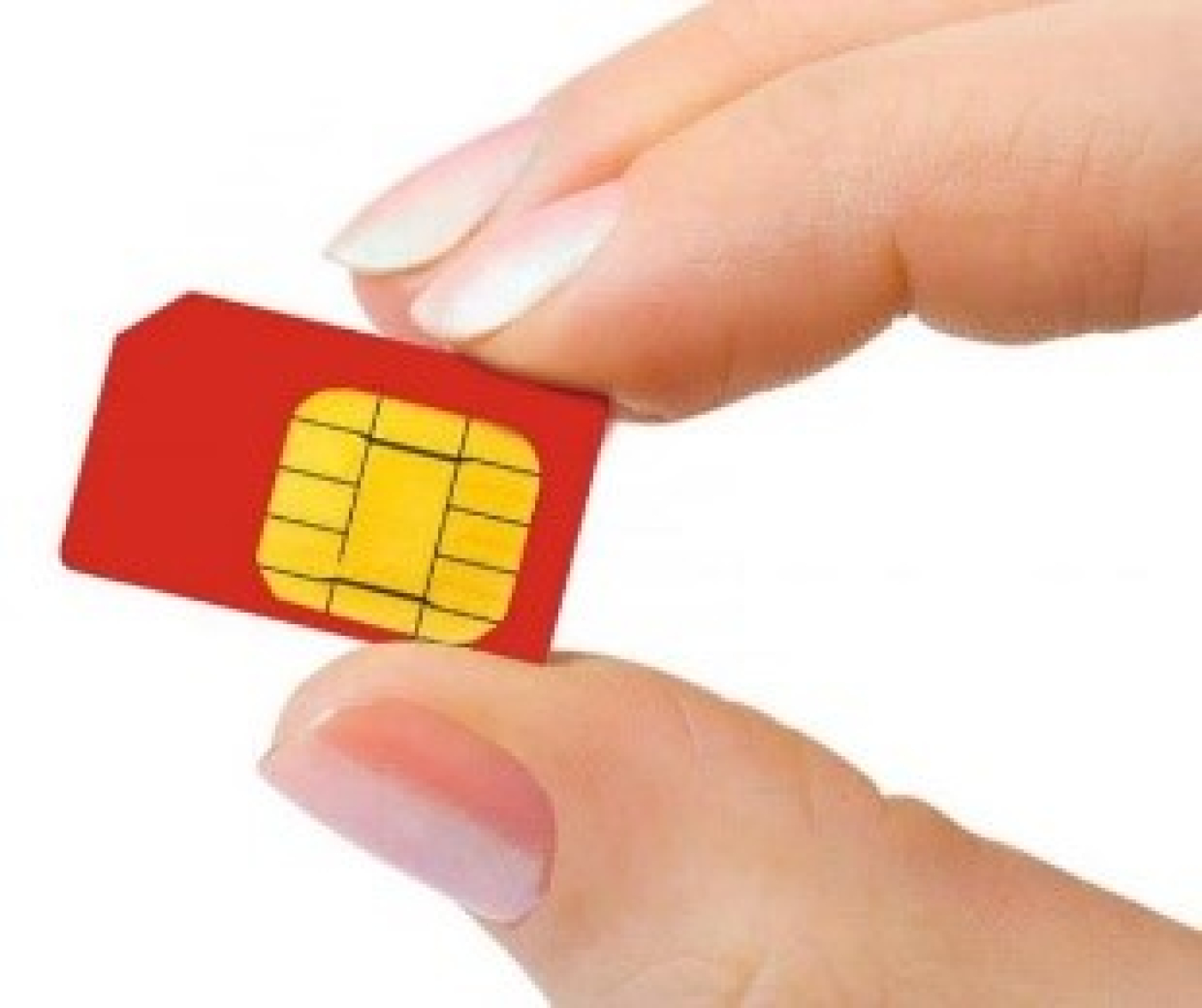
Presence Detection. Manufacturers chose a variety of ways to implement presence detection. Occupancy sensors were mounted remotely (on poles or buildings) or integrated in the luminaires. Integrated sensors can be programmed to control each luminaire independently, or to control a group of luminaires based on a signal from any one of the sensors in the group. The remote sensors are programmed to control groups of luminaires, assigned using the software interface tool. Most of the sensors incorporated Passive Infrared (PIR) technology and one system used Microwave Doppler Radar technology.
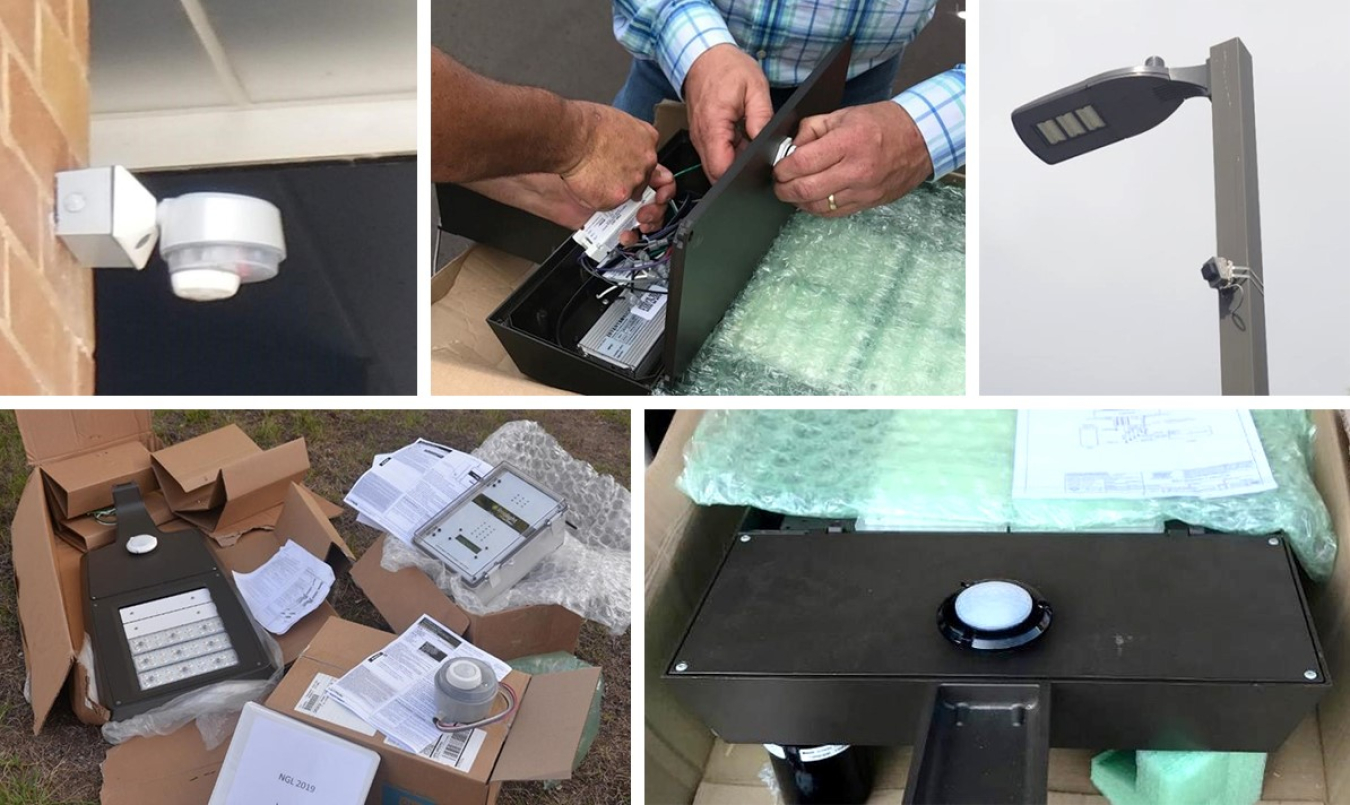
Central Management Software. Central management software allows owners and facility staff to monitor and manage the energy use, maintenance, and security of the system. One system used PC-based software and the others used cloud-based software. The systems varied in their approach to the front-end interface and the degree of user access and customization allowed. One system included a front end designed for a less sophisticated user, where the manufacturer provided support to change and customize settings. For the other systems, the front-end interface provided multiple levels of user access, from read-only access to full control and troubleshooting access. For users with full access, the systems typically allowed detailed customization of operational and monitoring settings. However, in many cases the software is complicated, and even sophisticated users will need training in order to implement detailed customization.
Commissioning. In contrast to the “easy” indoor systems that NGLS is evaluating, manufacturer involvement in initial setup and commissioning was necessary and expected for the outdoor network control systems. The level of manufacturer involvement varied between the systems. Some systems relied on significant manufacturer involvement, with a Certified Field Tech visiting the site to connect and commission the gateway, customizing the front-end software, and then providing customer training. Other systems provided automatic operation upon initial startup; the system automatically finds the gateway and nodes and operates in photocontrol mode, allowing safe operation until additional customer configuration is complete. For these systems, manufacturers typically provide support remotely to assist with customization of settings, such as schedules and groups.
Documentation. There was a wide variation in the format and content of the installation documents for luminaires and control system components, with a correspondingly wide variation in their clarity and usefulness. However, documentation from the manufacturer given to the IC supervisor prior to the job start did not typically make it to the field staff responsible for the installation. In addition, contractors often did not read documentation provided in the box, particularly for familiar tasks, like installing and wiring a luminaire. Sometimes the contractor read printed instructions provided in the box, but if they were not clear, things still got installed incorrectly.

